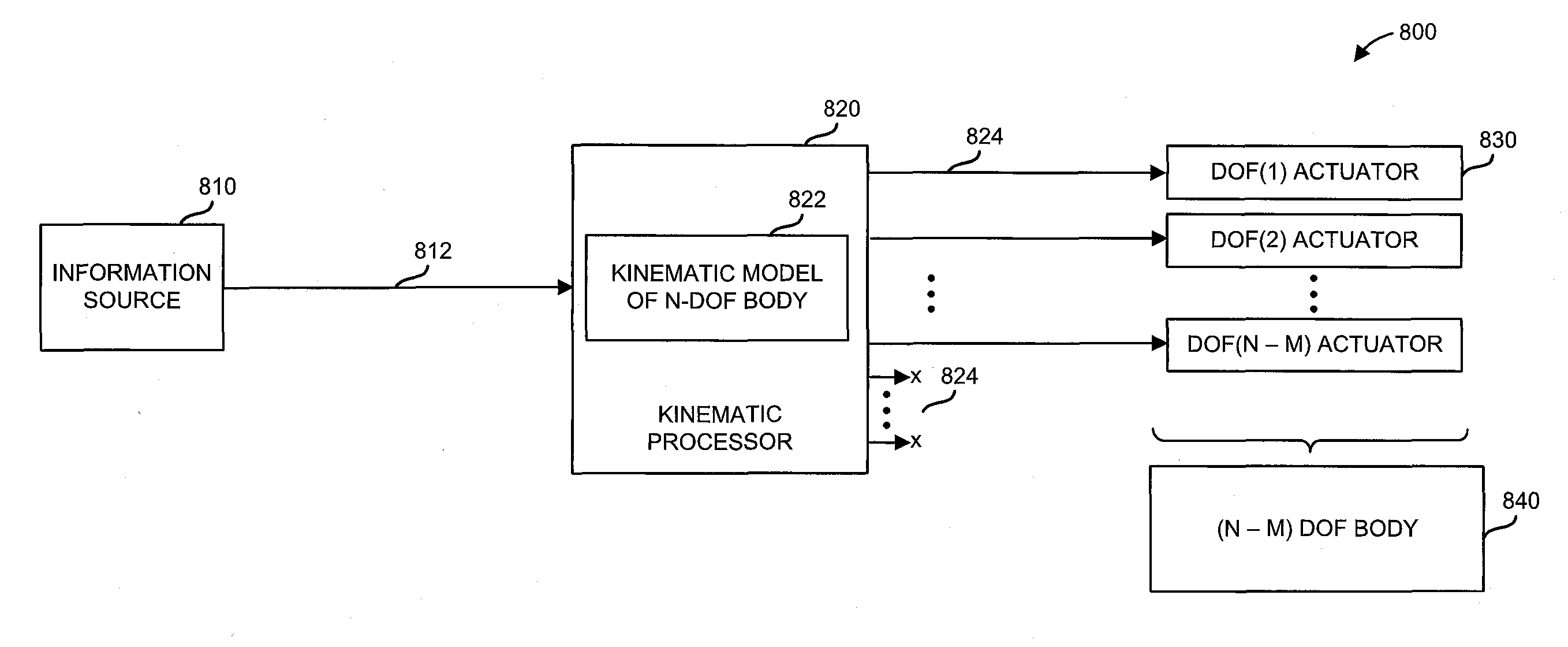Phantom degrees of freedom for manipulating the movement of mechanical bodies
a technology of mechanical bodies and freedom, applied in the field of improved surgical and/or robotic devices, systems, and methods, can solve the problems of affecting the operation efficiency of the robot manipulator, the inability to achieve two orientational degrees of freedom within the workspace, and the inability to control the robot manipulator arms and/or tools
- Summary
- Abstract
- Description
- Claims
- Application Information
AI Technical Summary
Benefits of technology
Problems solved by technology
Method used
Image
Examples
first embodiment
[0111]FIG. 10A is a block diagram showing a simplified system 1000 for controlling a manipulator assembly using an input device in accordance with a System 1000 includes an input device 1010, a controller 1020, and a manipulator assembly 1030. The input device 1010 may be similar to the information source 810 discussed with reference to FIG. 8, controller 1020 may be similar to the kinematic processor 820 discussed with reference to FIG. 8, and the manipulator assembly 1030 may be similar to the actuators and mechanical body 840 discussed with reference to FIG. 8. In one embodiment, the manipulator assembly 1030 includes a manipulator (e.g., manipulator 500) and / or a tool (e.g., tool 511). Manipulator assembly 1030 may have one or more manipulator kinematic degrees of freedom and, in some embodiments, may also or alternatively have one or more actuation degrees of freedom. Further, manipulator assembly 1030 may be operable to control the position of one or more end effectors (or, m...
second embodiment
[0116]FIG. 10B is a block diagram showing a simplified system 1001 for controlling a manipulator assembly using an input device in accordance with a System 1001 includes an input device 1010, a controller 1020, and a manipulator assembly 1030, which may be similar to those discussed with reference to FIG. 10A.
[0117]In accordance with this embodiment, the input device 1010 and controller 1020 are operable to control a greater number of kinematic degrees of freedom than the manipulator assembly 1030 has, similar to the embodiment discussed with reference to FIG. 10A. Further, the input device 1010 is operable to actuate a non-kinematic degree of freedom of the manipulator assembly 1030. For example, the input device 1010 may be operable to actuate a vacuum pressure associated with the manipulator assembly 1030.
[0118]Accordingly, in this embodiment, the input device 1010 includes six kinematic degrees of freedom 1012 as well as at least one actuation degree of freedom 1014, where the ...
third embodiment
[0121]FIG. 10C is a block diagram showing a simplified system 1002 for controlling a manipulator assembly using an input device in accordance with a System 1002 includes an input device 1010, a controller 1020, and a manipulator assembly 1030, which may be similar to those discussed with reference to FIG. 10A.
[0122]In accordance with this embodiment, the manipulator assembly 1030 has a number of kinematic degrees of freedom (e.g., eight), which includes at least one null space degree of freedom (e.g., three null space degrees of freedom), but still lacks at least one of the degrees of freedom necessary to fully define the position of an end effector associated with the manipulator assembly 1030. For example, although the manipulator assembly 1030 includes eight kinematic degrees of freedom including redundant degrees of freedom, it still lacks at least one independently controllable rotation or translation degree of freedom.
[0123]It should be recognized that when null space degrees...
PUM
 Login to View More
Login to View More Abstract
Description
Claims
Application Information
 Login to View More
Login to View More - R&D
- Intellectual Property
- Life Sciences
- Materials
- Tech Scout
- Unparalleled Data Quality
- Higher Quality Content
- 60% Fewer Hallucinations
Browse by: Latest US Patents, China's latest patents, Technical Efficacy Thesaurus, Application Domain, Technology Topic, Popular Technical Reports.
© 2025 PatSnap. All rights reserved.Legal|Privacy policy|Modern Slavery Act Transparency Statement|Sitemap|About US| Contact US: help@patsnap.com



